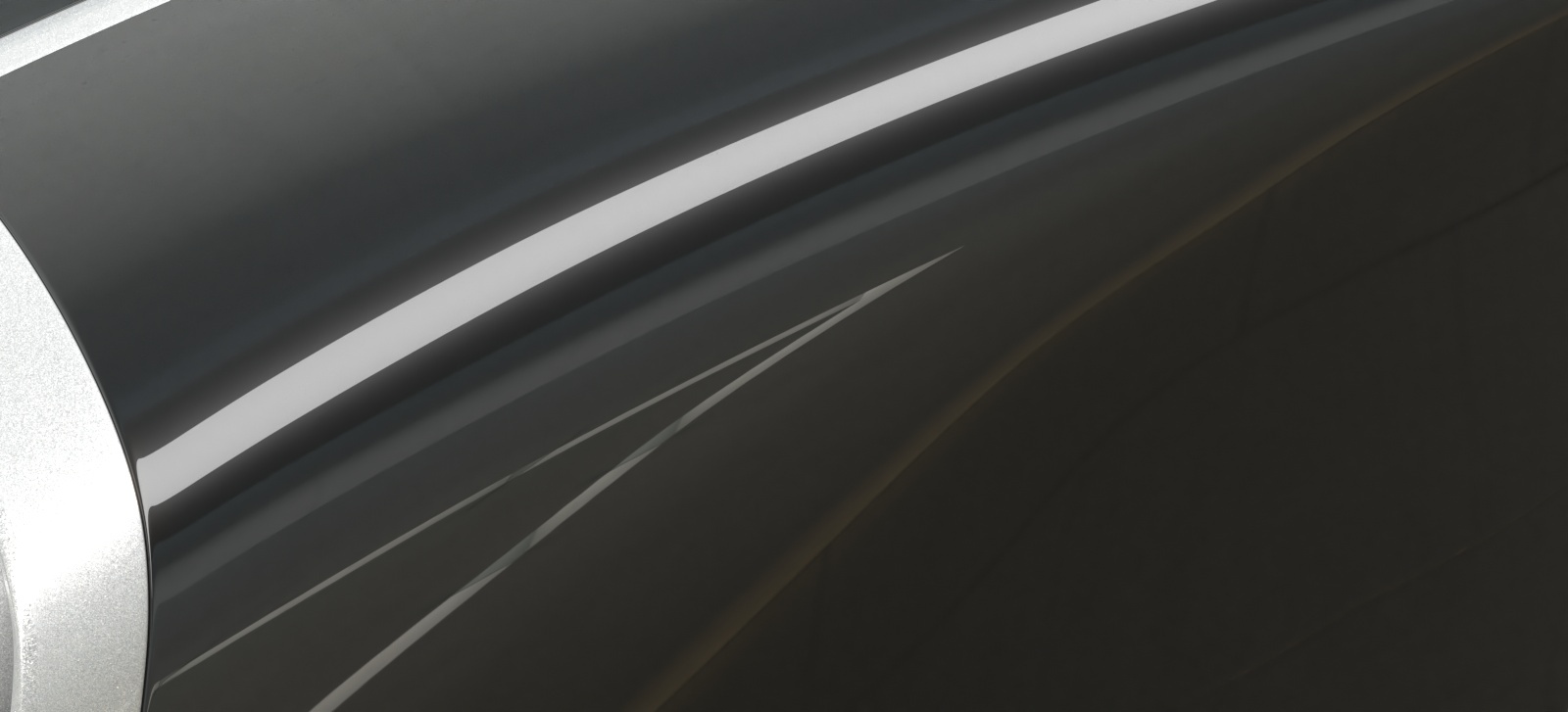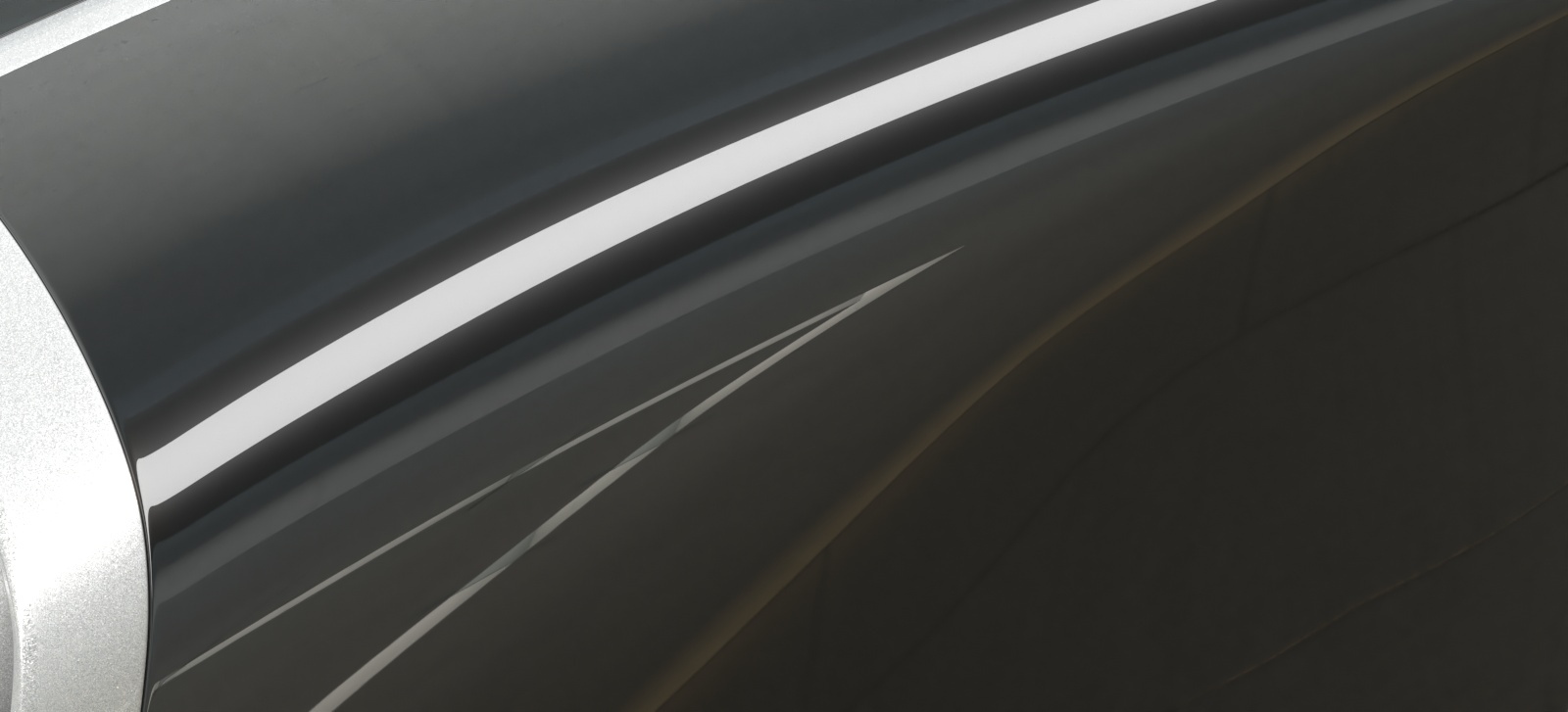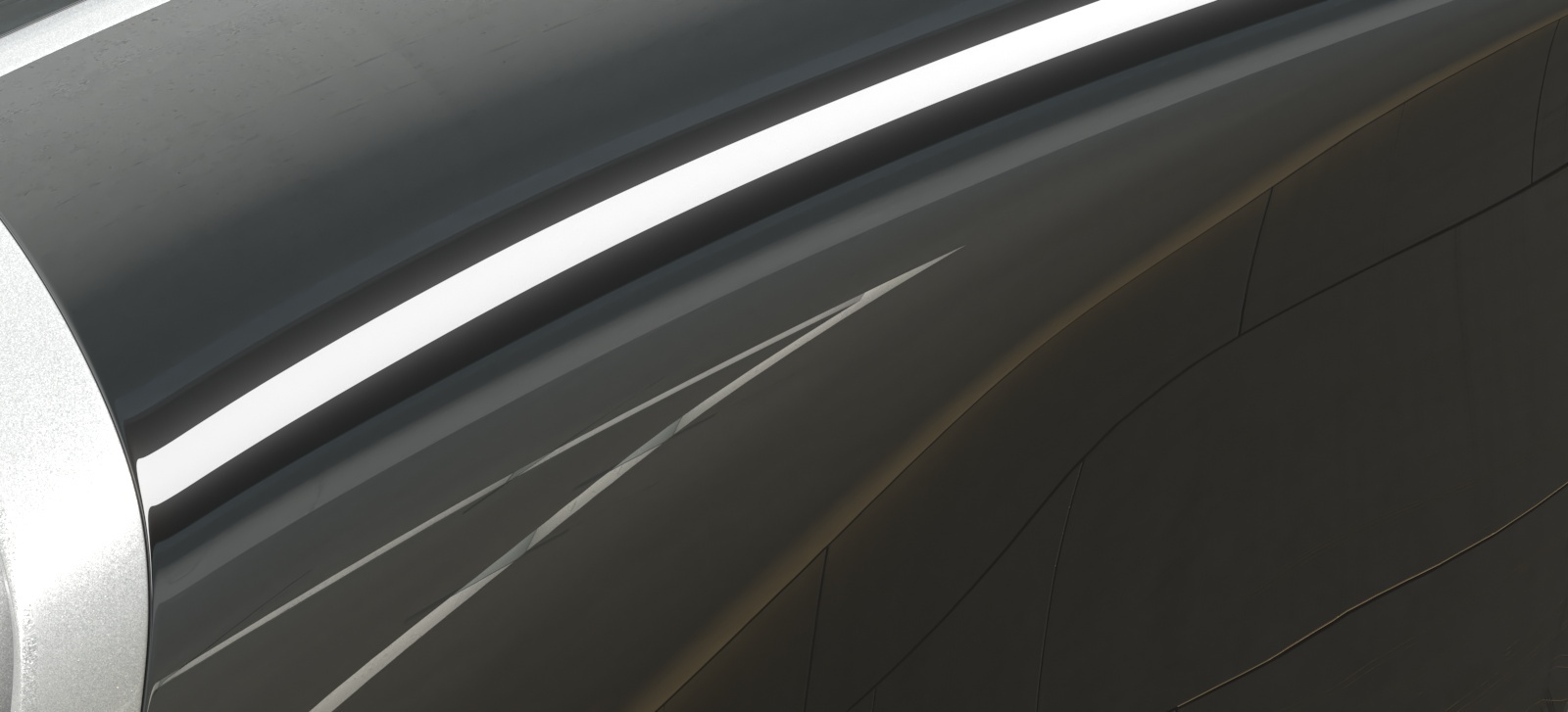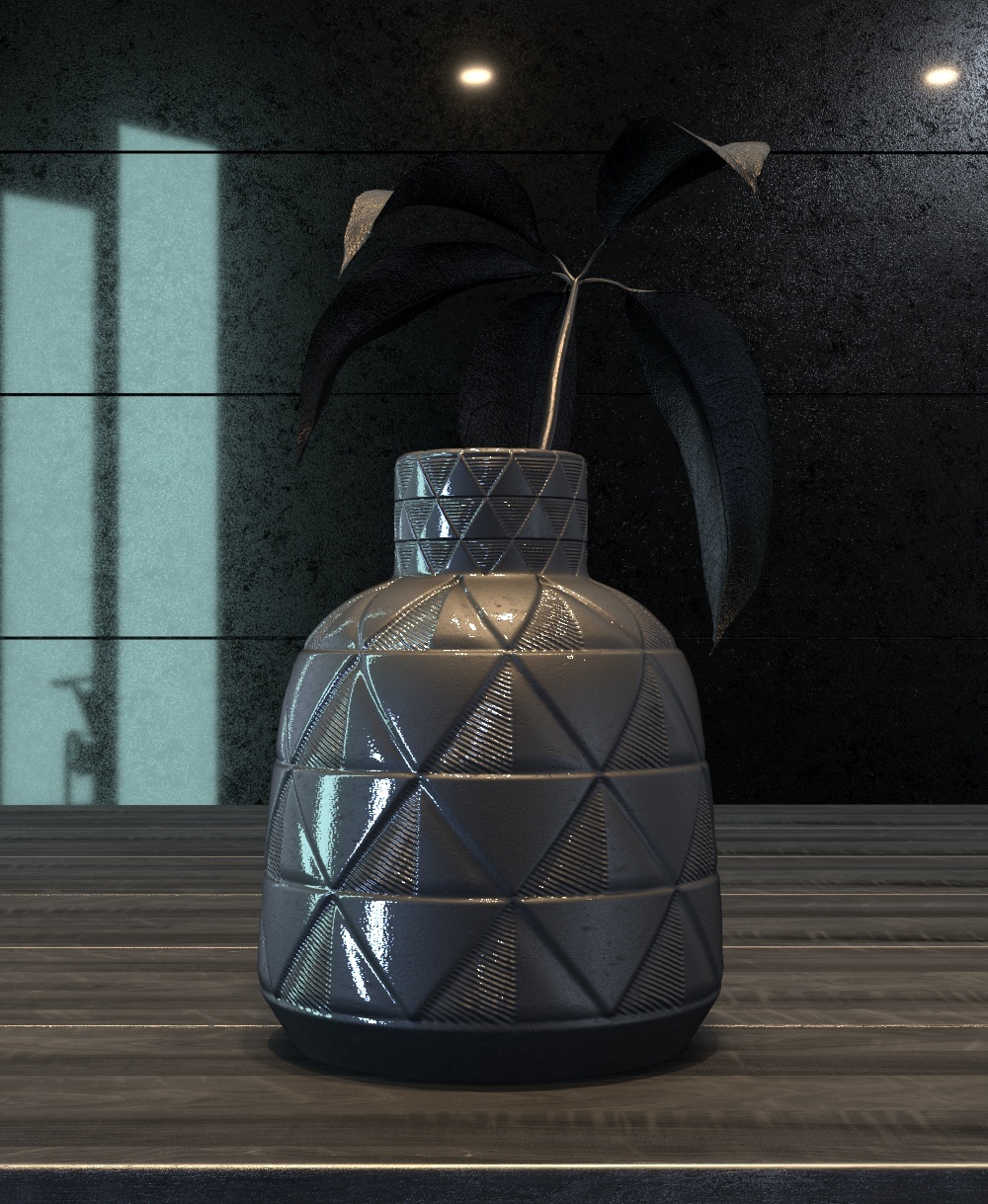Coat Color – Determines the coat layer's color. The Coat Color tints all layers - reflection, sheen, diffuse and refraction. Note that the coat specular highlights are not affected and are always white. A texture map can be used here. See the Coat Color example below for more information. Amount – Specifies the blending weight of the coat layer. A value of 0 does not add a coat layer, while higher values blend the coat gradually. See the Coat Amount example below for more information. Darkening – Controls how the coat layer impacts the appearance of the underlying layers, dielectric or metallic. This effect emulates how a clear coat layer slightly darkens the underlying material due to light absorption and scattering, such as the effect you would see when applying a darker lacquer on top of a wooden surface. By adjusting this parameter, artists can create slight color changes, adding depth and making the render look more realistic. Coat Glossiness – Controls the sharpness of reflection. A value of 1.0 means perfect glass-like reflection; lower values produce blurry or glossy reflections. See the Coat Glossiness example below for more information. IOR – Specifies the Index of Refraction for the coat layer. Lock Coat Bump to Base Bump – When enabled, it prioritizes the base bump map during rendering over the coat bump map. You can use it to temporarily hide the coat bump. Bump Map Type – Allows the user to specify whether a bump map or a normal map effect is added. Bump Map Bump Map – Specifies the bump/normal map used as a coat bump. Coat Bump Mult – A multiplier for the bump effect. Coat Anisotropy – Determines the shape of the highlight. A value of 0.0 means isotropic highlights. Negative and positive values simulate "brushed" surfaces. The accepted values are in the range from 0.999 to -0.999. Coat Anisotropy Rotation – Determines the orientation of the anisotropic effect in a float value between 0.0 and 1.0 (where 0.0 is 0 degrees and 1.0 is 360 degrees). |
|



















